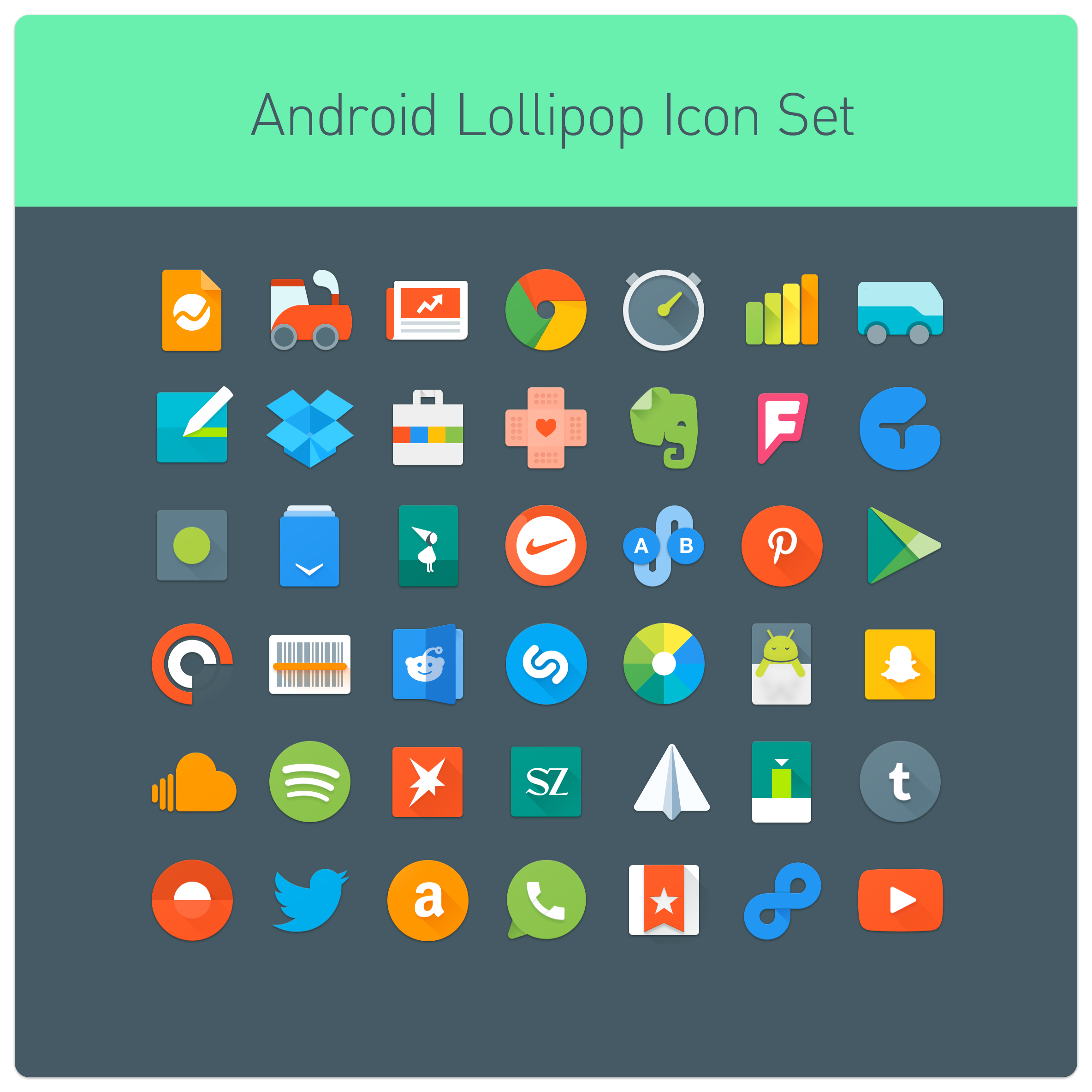

Google’s decision to make interfaces like the notification tray more lightweight with gaps between light-coloured panels, buttons and other elements succeeds in making Android 5.0 feel like a dramatic leap forward in the evolution of mobile software.

Even Android 4.4.4 running on a Nexus 7 feels like it could be from a previous era of mobile computing. The visual design of Lollipop is indeed a treat, and it’s surprising how modern the UI feels once you go back to tablets running older versions of the software. The final effect is somewhat like paging through a unique small-run art book, a complex yet instantly understood artifact made up of bold-flat colors covered in simple, elegant typefaces that seem to leap from the page despite a print-like adherence to the same.
#Android lollipop stock icons full#
Lollipop marks Google’s full commitment to its material design principles of user interface creation, which take cues from real-world materials to present the user with UI elements that slide over one another, casting shadows and animating in and out of maximized and minimal states. It’s possible that design is the most significant part of Android 5.0. Lollipop’s playful, animation-rich aesthetic, which Google calls “material design,” feels fresh and alive, with an internal logic that should mean both longtime and new Android users can get accustomed to their new surroundings quickly – for the most part. Version 5.0 of Android continues the candy naming tradition with “Lollipop,” and despite the fact that ‘L’ is just next in the alphabet, something about the name seems to resonate with the bold new design direction Google has introduced for this generation of its software. Google’s new mobile operating system is now available to consumers, as new Nexus hardware (starting with the Nexus 9) begins to make its way into the hands of pre-order customers.


 0 kommentar(er)
0 kommentar(er)
